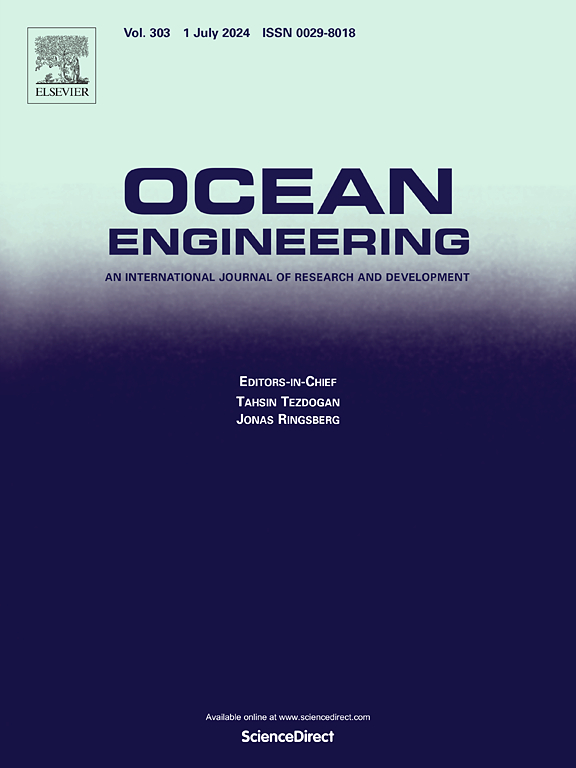Application of the reduced-order-discrete-module hydroelastic analysis for offshore floating photovoltaic systems
IF 5.5
2区 工程技术
Q1 ENGINEERING, CIVIL
引用次数: 0
Abstract
This study applies the previously proposed Reduced-Order-Discrete-Module (RODM) method to the hydroelastic analysis of Offshore Floating Photovoltaic (OFPV) systems. The research employs a reduced-order method, coupled with multi-body hydrodynamic loads, to establish a hydroelastic analysis framework. By utilizing the penalty method to define hinge constraints between modules, a connection model with selective elastic rotation capabilities is constructed. The study simulates inhomogeneous wave fields by applying differentiated wave loads to various modules and compares the equivalent stress distributions under inhomogeneous and homogeneous wave fields. The structures with complex interconnections are simulated to demonstrate the applicability of the RODM method. The results indicate that, compared to mode superposition method and experiments, the proposed RODM method consistently predicts hydroelastic responses for both continuous and hinged structures under various wave incidence angles. The inhomogeneous wave fields significantly amplify the equivalent stresses, with stress levels increasing by approximately fivefold compared to homogeneous wave fields. Based on the SEREP-hydroelastic model, a novel equivalent stress calculation method integrating displacement-strain-stress coupling is proposed. The RODM method demonstrates significant advantages and applicability in the study of OFPV systems, particularly in addressing complex constraint optimization and inhomogeneous wave field effects.
降阶离散模块水弹性分析在海上浮式光伏系统中的应用
本研究将先前提出的降阶离散模组(RODM)方法应用于海上漂浮式光伏(OFPV)系统的水弹性分析。研究采用降阶方法,结合多体水动力载荷,建立了水弹性分析框架。通过惩罚法定义模块间的铰约束,构建了具有选择性弹性旋转能力的连接模型。本研究通过对各模块施加微分波载荷模拟非均匀波场,比较非均匀波场和均匀波场下的等效应力分布。通过对具有复杂互连关系的结构进行仿真,验证了RODM方法的适用性。结果表明,与模态叠加法和实验结果相比,所提出的RODM方法在不同入射角下对连续结构和铰链结构的水弹性响应预测一致。非均匀波场显著地放大了等效应力,与均匀波场相比,应力水平增加了大约5倍。基于serep -水弹性模型,提出了一种集成位移-应变-应力耦合的等效应力计算方法。RODM方法在OFPV系统的研究中显示出显著的优势和适用性,特别是在解决复杂约束优化和非均匀波场效应方面。
本文章由计算机程序翻译,如有差异,请以英文原文为准。
求助全文
约1分钟内获得全文
求助全文
来源期刊

Ocean Engineering
工程技术-工程:大洋
CiteScore
7.30
自引率
34.00%
发文量
2379
审稿时长
8.1 months
期刊介绍:
Ocean Engineering provides a medium for the publication of original research and development work in the field of ocean engineering. Ocean Engineering seeks papers in the following topics.
 求助内容:
求助内容: 应助结果提醒方式:
应助结果提醒方式:


